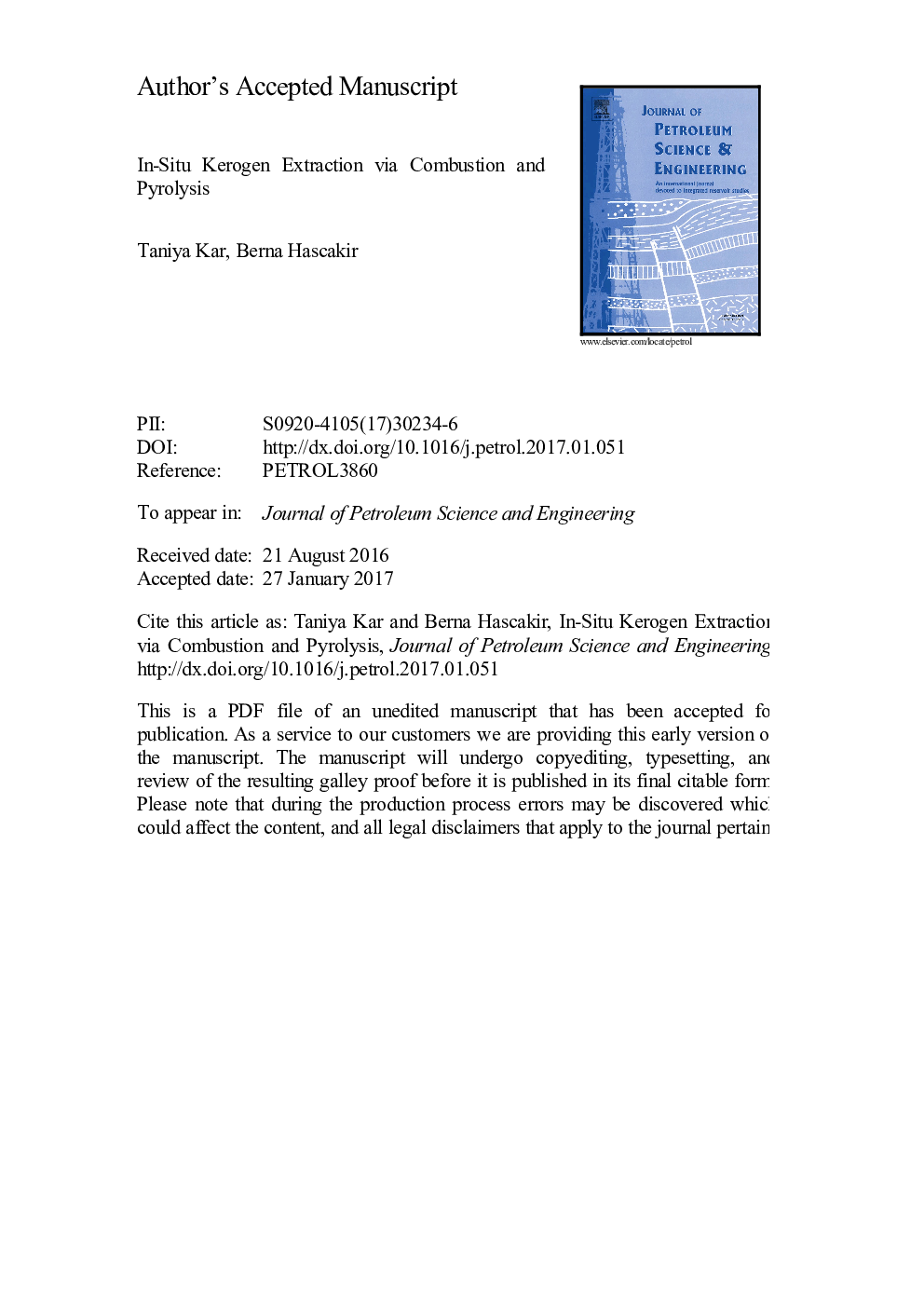| Article ID | Journal | Published Year | Pages | File Type |
|---|---|---|---|---|
| 5484234 | Journal of Petroleum Science and Engineering | 2017 | 22 Pages |
Abstract
The extraction of organic kerogen from the vast oil shale reserves in Green River, Utah is limited owing to the environmental and technical challenges. This study compares the efficiency of combustion and pyrolysis to extract the kerogen from shale, in terms of organic thermal decomposition temperature, heating rates, and activation energy calculations. Samples collected from the Green River formation were first characterized by X-ray Diffraction (XRD), Scanning Electron Microscopy (SEM), Energy Dispersive X-ray Spectroscopy (EDS), and Fourier Transform InfraRed (FTIR) Spectroscopy. Thermogravimetric Analyzer/Differential Scanning Calorimetry (TGA/DSC) was used to simulate combustion via air injection and pyrolysis via nitrogen injection. These experiments were carried out with and without addition of water and a catalyst (iron oxide), at three different heating rates. The organic and inorganic composition of the oil shale samples before and after the experiments were determined via FTIR. The effectiveness of the processes was examined by the thermal decomposition temperature of kerogen and activation energy requirement. It has been observed that the combustion process is a more efficient method for the extraction of kerogen from oil shale than the conventional pyrolysis. The addition of water and catalyst to combustion has been found to lower the required temperature for kerogen decomposition for lower heating rate. Combustion and pyrolysis at higher heating rates are found to generate higher amount of heat from the process. This study provides insight for the process optimization of the thermal methods for the kerogen extraction.
Keywords
Related Topics
Physical Sciences and Engineering
Earth and Planetary Sciences
Economic Geology
Authors
Taniya Kar, Berna Hascakir,
